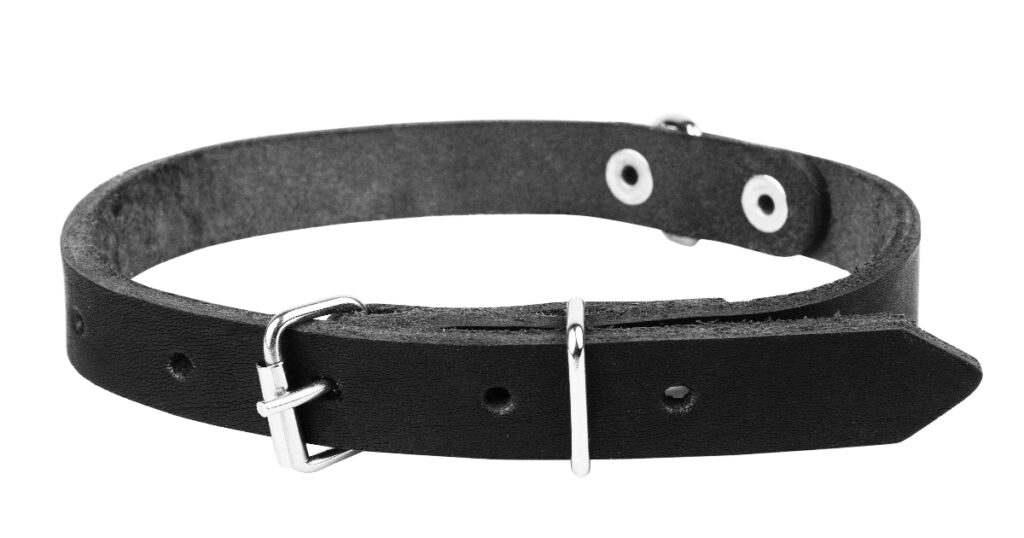A dog’s collar picks up plenty of dirt, odors, and germs during everyday use. While handwashing is gentlest, many collars can withstand occasional machine washing if done carefully.
Checking collar materials, detaching hardware, using laundry bags, and air drying are key steps when machine washing a dog collar.
Learn how to refresh and disinfect collars between washes too.
With the right preparation, you can safely clean most dog collars in the washing machine.
Check The Collar’s Material

The collar’s material is the most important factor in deciding if machine washing is appropriate. Nylon and leather collars have different washing requirements.
Nylon collars are durable and waterproof, making them ideal for machine washing. Check that the nylon is high quality; cheaper nylons may bleed color or warp in hot water. A sturdy nylon collar can withstand hot water, detergent, and machine agitation.
Leather collars require more care when washing. Leather can dry out and crack if soaked or agitated. Handwashing leather collars is gentler, but machine washing on delicate or gentle cycles can work. Avoid soaking leather; opt for damp wiping instead. Condition regularly to keep leather supple.
Fabric collars like cotton or polyester blends can go in the machine but may pill or deform easily. Wash gently and air dry.
Look for collars blended with rubber or silicone; the rubber makes them stretchy but also delicate. Handwash instead of machine washing these.
Detach Hardware Before Washing
Collars often have metal components like buckles, rings, nameplates, or jingling tags. Detach all hardware before putting the collar in the washing machine, even if the metal looks stainless steel.
The jostling of the machine can damage, warp, or scratch metal pieces. It can also harm the machine itself. Remove the hardware and wash it separately by hand with soap and water.
For quick cleaning, remove collar hardware and wipe the collar down with soap and water rather than machine washing. Pay extra attention to cleaning the underside of the collar, as it touches the dog’s skin and fur.
If collar hardware is not detachable, skip the machine and handwash the entire collar to be gentle on metal parts.
Wash Delicately In A Laundry Bag
For collars that can go in the machine, use a delicate wash cycle and cold water. Hot water can damage the material or adhesive holding the collar together.
Place the collar in a laundry bag and zip it closed. This prevents the collar from catching on to other items in the wash. The bag also protects the washing machine from damage if metal pieces accidentally get left on the collar.
Set the washing machine to a short, gentle cycle for delicates. Do not use heavy-duty cycles. Skip fabric softener or bleach—these can break down collar materials prematurely.
Mild liquid detergent is ideal for getting dog collars clean. Powder detergent can get trapped in collar fibers. Avoid detergents with strong perfumes or dyes.
Let the collar air dry rather than machine drying. This prevents heat damage or shrinking. Keep drying collars flat to prevent twisting or distortion.
Disinfect In Between Washes
Regular collar washing removes most dirt, odors, and germs. However, you may need to disinfect in between full washes, especially if your dog gets into something messy!
Mix a diluted bleach solution of 1 part bleach to 10 parts water. Soak a clean washcloth in the solution. Wipe down the collar, carefully scrubbing the surface. Rinse thoroughly with clean water on a fresh washcloth.
Hydrogen peroxide or alcohol solutions also work to disinfect. Avoid using these cleaners directly on leather or fabric collars, as they can dry out the material.
UV light is another easy disinfection method. Leave the collar in direct sunlight for 30 minutes. The UV rays kill germs and bacteria. Just make sure to wipe off any visible dirt first!
Clean Dog Collars Frequently
Even with occasional machine washing, dog collars still need regular manual cleaning. Every few days, wipe down the collar with a damp cloth, mild soap, and water. Pay extra attention to the underside of the collar, where odors and germs accumulate.
Check for wear and tear during cleaning. Look for fraying fabric, cracking leather, or loose stitching. Replace collars displaying excessive damage to avoid injuries.
Make post-walk wipe-downs part of your routine. Dirt and moisture buildup can irritate your dog’s skin. Cleaning helps prevent rashes or infections under the collar. It also keeps odors at bay between full washes.
Rotate collars so they can fully dry between wears. Bacteria thrive in moisture, so letting collars dry prevents growth. Having multiple collars makes rotating easier.
Keep an eye out for signs your collar needs cleaning—stains, stiff or crunchy feeling, strange odors, and visible dirt buildup. Clean promptly when you notice these indicators.
Add Odor Removers And Conditioners
Even with frequent washing, some dog collars retain odors or require extra softening. Try these tips:
- Soak in warm water with baking soda and white vinegar to lift odors. Rinse well. The vinegar smell fades as it dries.
- Rub the leather conditioner into leather collars to prevent stiffness and cracking.
- For serious odors, seal the collar in a bag with odor absorbers like charcoal bags or baking soda. Keep sealed for several hours to deodorize.
- Spray with an enzyme cleaner like Nature’s Miracle to break down odor molecules and lift organic smells.
- Stuff the collar with dryer sheets before storage to make it smell fresh.
Buy A Machine Washable Collar
If you dislike handwashing collars, choose machine-washable styles:
- Nylon collars with sturdy buckles hold up to frequent washing. A single piece of weatherproof nylon is best.
- Silicone or rubber collars are flexible and waterproof. They bounce back after machine washing.
- Plastic snap closures avoid metal corrosion. Plastic clasps also reduce noise.
- Web collars have simple nylon webbing with no metal. These slip over the head.
- Breakaway cat collars have quick-release snaps for safety. Light and basic, they wash easily.
For convenience, buy several easy-care collars. You can toss them directly into the washing machine between wears. Replace collars every 6-12 months as materials degrade. Investing in machine-washable collars saves time and hassle!
FAQ
Can I wash a nylon collar in hot water?
No, hot water can damage the nylon fibers or adhesive holding the collar together. Wash nylon collars in cold water only.
How do I clean a fabric collar?
Handwash fabric collars in cold water using gentle soap or detergent. Avoid soaking, heavy agitation, and wringing fabric out, which can cause pilling. Air dry flat.
Should I put silicone collars in the dryer?
Avoid putting silicone or rubber collars in the dryer, as the heat can damage them. Always air dry these stretchy styles fully after washing.
What’s the best way to get odors out of a collar?
Soak the collar in warm water with baking soda and white vinegar to effectively lift odors before washing. Enzyme cleaners are also helpful for removing organic odors like mold or mildew.
How often should I replace my dog’s collar?
Plan on replacing your dog’s collar every 6-12 months. The buckles, fabric, adhesive, and fittings on collars gradually degrade with regular use and cleaning.
Conclusion
Dog collars get dirty but with the right methods, you can safely clean them in the washing machine.
Check materials first and wash gently on delicate cycles. Handwashing is kinder for leather, fabric, and rubber blends.
For metal components, wash by hand separately. Disinfect and air dry collars between full washes.
Rotate multiple collars to stay fresh. Clean collars keep your dog comfortable while reinforcing an important training tool.

